It wasn’t a hard question to answer, or at least it shouldn’t have been. Moments before I sat basking in that bittersweet feeling you get when you finish a good book. In this case, the ‘good book’ was a hundred-hour-long JRPG by the name of Xenoblade Chronicles 2. It was a game that had dominated my free time over the last few months—much as its predecessors Xenoblade Chronicles and Xenoblade Chronicles X had done previously. As the credits rolled, I messaged a like-minded friend to share my momentous achievement. “Congrats!” came the reply. “Where does it rank for you among the other games in the series?”
…I didn’t know where to start.
Back in December 2015, I’d naively dived into Xenoblade Chronicles X with little knowledge of its predecessor. I vaguely knew of its reputation of course; Shulk had debuted in Super Smash Bros. a year earlier, exposing Monolith Soft’s creation to a larger, more mainstream audience. Xenoblade Chronicles X was most notable to me however, for simply existing on the game starved console that was the Wii U. It was a shock to me then that I fell for it quite as much as I did.
Xenoblade Chronicles X – The Art of Exploration
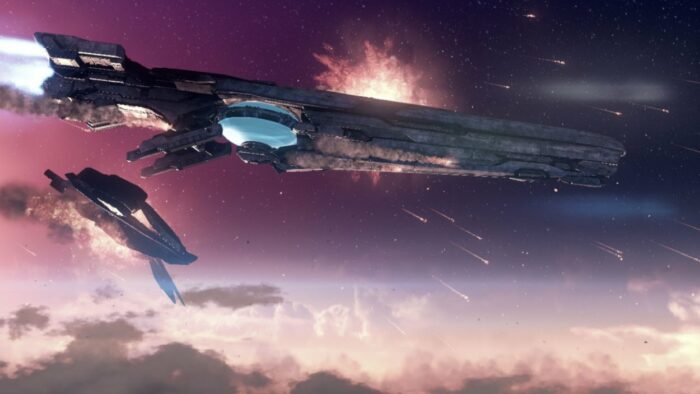
Humanity, caught in the crossfire of an intergalactic war, must urgently flee Earth. Huge ark-like ships evacuate from every major city, carrying the most precious of cargo: the last remnants of human life. Without mercy, the ships are gunned down by the alien menace—but one (known as the White Whale) survives long enough to escape the carnage, eventually crash landing on a habitable planet named Mira.
The wreckage of the White Whale becomes home-base for the colonists who christen it New Los Angeles—in honour of the city that they had been forced to abandon. The last remnants of humankind must now take root and struggle to survive in a beautiful, unfamiliar, hostile land.
Two months pass and the player character is found in a hibernation pod, having been thrown from the White Whale during the crash landing (Xenoblade Chronicles X remains unique in the series for requiring the player to create and name the main character). After being taken back to New Los Angeles—now a rudimentary, near-future city complete with Gundam-style mechs—they are introduced to the main characters of the story before being enlisted into BLADE: N.L.A.’s all-purpose, governmental taskforce.
As a member of BLADE, the player is tasked with a plethora of objectives; be it foraging for supplies, policing the city, or subduing Mira’s more hostile wildlife—some of which is terrifyingly colossal. At a more fundamental level your role is to explore and chart the strange, wonderous and seemingly endless landscape surrounding New Los Angeles. It’s here that Xenoblade Chronicles X is at its best.
Upon its release much was said about the game’s open world. Claims of it being one the largest of its kind began to surface in the gaming press—400km², twice the size of The Witcher 3 or 10 times the size of Skyrim. And it wasn’t just big, it was immaculately crafted and stunningly beautiful too. Incredible vistas seem to reveal themselves at every turn and urge the player to stop and stare.
It’s not often that I truly lose hours at a time to a video game but it’s fair to say that I lost entire evenings to the enticing beauty of Mira.
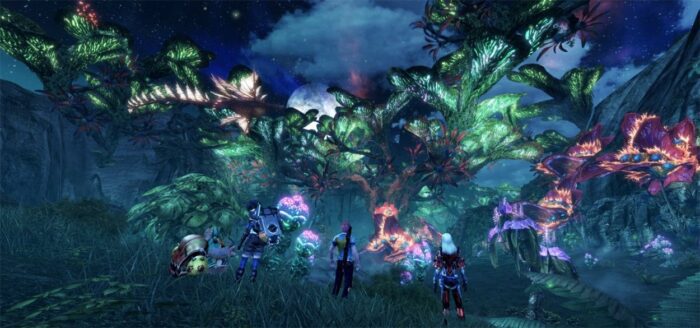
Laid out in a hex based grid on the Wii U gamepad, the map could be satisfyingly conquered, piece by piece. A probe placed at the appropriate spot in each hex generates resources for the colony, improving technological research and giving the player access to better weapons and armour. With each piece unlocked, one or more adjacent hexes would seem tantalisingly within reach.
Collectable items litter the landscape too, appearing as glowing orbs, tempting the magpie in all of us. Combined with a deep combat system, a comprehensive party levelling system and seemingly endless customisation options, the gameplay loop in Xenoblade Chronicles X was incredible.
Sadly, the story and characters sitting atop it all were not. The game had awkward writing, wooden voice-acting, and a plot that failed to live up to its intriguing premise. Add in a cast of characters that were at best dislikeable, and at worst unremarkable. All these elements worked in tandem to tarnish an otherwise unforgettable experience.
Controversy over the game’s localisation muddied the water too. Skimpy costumes for a 13-year-old female character by the name of Lin were heavily altered or removed entirely—deemed as too overtly sexual for western tastes. A slider to alter the breast sizes of the female characters was also omitted. These changes led to an outcry from certain sections of the fanbase, many of whom felt that the game was being censored. They argued that it should have released as originally intended, regardless of cultural differences. To the average gamer, this negative press would likely have shone the title in an unpleasant light.
Despite its flaws, Xenoblade Chronicles X had been one of the best gaming experiences I’d had in years. It compelled me to play the original title and I did so around a year later. Barely an hour in and Xenoblade Chronicles had revealed itself to be the antithesis of Xenoblade Chronicles X.
Xenoblade Chronicles – The Art of Storytelling
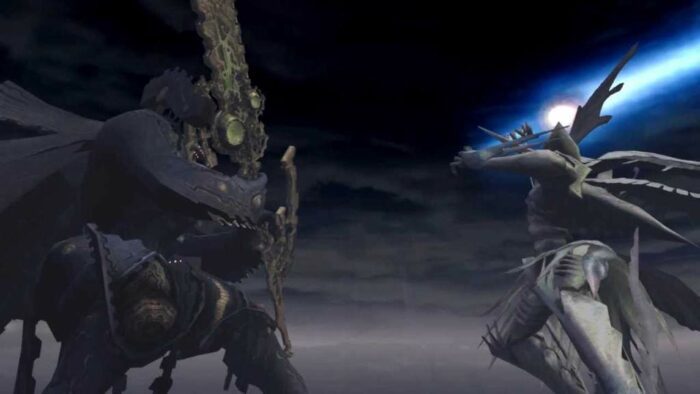
The Mechonis and the Bionis, two warring titans that fought to the death an age ago are eternally linked by their fatal sword blows. On their ancient remains, two life forms have flourished: the Homs of the Bionis and the Mechon of the Mechonis. Through these opposing peoples the conflict rages on.
A fierce battle is fought on the sword of the Bionis.
Dunban (a hero of the Homs) wields the powerful Monado—the only effective weapon against the Mechon. With the help of his comrades, he ensures that the Homs are victorious against the invading Mechon, but not without cost. The unruly power of the Monado costs him the use of his sword arm, and with no one else able to control the sword, the Homs are left almost defenceless.
Seven years later, we join a scientifically gifted boy named Shulk. With the help of his friends Reyn and Fiora, Shulk must try to unlock the hidden potential of the Monado and destroy the Mechon once and for all.
What follows is commonly regarded as one of the greatest stories ever told in a video game. Spaced over dozens of hours of gameplay are ten hours’ worth of cutscenes where the plot twists and turns, builds and escalates—surprising and moving the player in equal measure—all before reaching an incredible, unforgettable finale.
Due to a North American release originally being snubbed by Nintendo, the English localisation was handled by Nintendo of Europe. An all English cast of voice actors was chosen–a rarity in gaming, and one that gave the game a unique feel. The cast, led by Adam Howden as Shulk, delivered outstanding performances across the board; giving the story the grounding and gravitas it both needed and deserved.
Each character is well served too, having their own arc to conclude. Themes of love, friendship, hate and revenge are present throughout. Shulk is driven by all of them; consumed by the latter. Adam Howden managed to deliver Shulk’s many fiercely written monologues with hair-raising intensity where many an actor would have fallen flat.
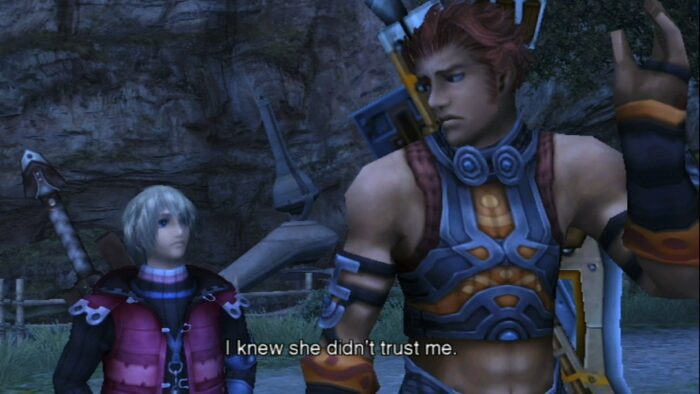
Somewhat tragically, elsewhere the ambitions of Xenoblade Chronicles were held back by the limited architecture of the Wii. Even in 2010 the game looked severely outdated. The Xbox 360 and PS3 had been out for several years with games like Metal Gear Solid 4 and Alan Wake showcasing the new generation of HD graphics. The Wii—essentially an overclocked GameCube—looked ancient in comparison. Stiff animation and expressionless faces detracted from the dramatic weight of the cutscenes. What should have been beautiful, enchanting vistas became awkwardly flat, pixelated landscapes—whereas Mira had been a joy to explore, the Bionis and Mechonis felt cold, dead and unappealing.
Perhaps it’s for this reason that Xenoblade Chronicles was resigned to its cult following; ignored by most but commonly ranked among the all-time greats by the few who had played it. (Collin Henderson even placed it in his top ten games of the decade.)
By January 2017, thanks to word of mouth, the game’s reputation was more well known. At this time the reveal of the Nintendo Switch was abuzz with excitement and intrigue. A live presentation was being held to show off the new system, alongside a selection of games in development.
Xenoblade Chronicles 2 was one such title, proudly standing shoulder to shoulder with the likes of Breath of the Wild and Super Mario Odyssey. The two-minute teaser focused on beautiful, panoramic shots of a new main character running through wondrous landscapes. The art style was sharp—more anime inspired than before. The locations were more fantastical; whimsical even—it looked stunning. Before the year’s end the game had released.
Xenoblade Chronicles 2 – The Art of Combat
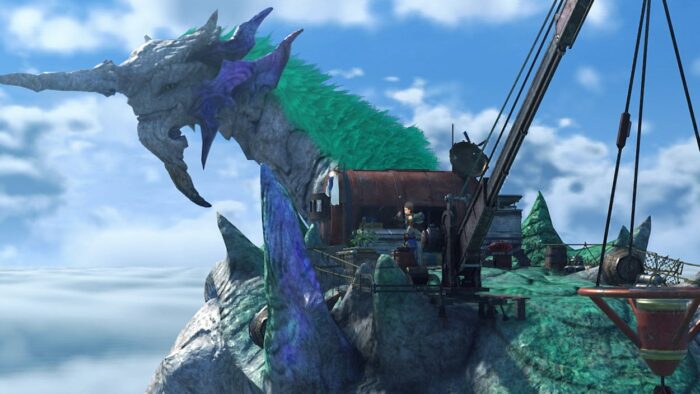
“An entire horizon of white. A sea of clouds, and at its heart, the World Tree, piercing the heavens… This… This is the world we call home… Alrest.
Story goes that when the world was young… Everyone in Alrest lived on the Tree, together with the divine father, the Architect.
According to the tales, it was a bountiful land. And the people there held the power to command even the heavens themselves. They called that paradise… “Elysium”.
But then, one day we were cast out. Nobody knows why. Perhaps we angered our creator, or perhaps it was something else entirely… All we know is, we were forced to leave Elysium to live here in Alrest. Where, it turns out, life was pretty hard.
But when it seemed like we would surely die out, the Architect… took pity on us… sending his servants, the Titans to save us. The few of us who survived settled on the Titans… and we’ve lived in harmony with them ever since.
But now, those Titans…*sigh* are beginning to die out.”
So goes the opening monologue from our main protagonist, Rex. Rex is a young, happy-go-lucky salvager who lives alone on the back of ‘Gramps’—the Titan who raised him. His world is soon turned upside down after taking on an unusual salvaging job from a corrupt merchant. The job turns out to be something far more sinister but results in a chance meeting with a woman named Pyra. Pyra is revealed to be the legendary Blade known as the Aegis and she asks Rex to take her to the mythical paradise, Elysium. Naively, he agrees.
In Alrest, Blades are weapons personified who live alongside a human companion known as their Driver. The relationship between Driver and Blade is central throughout the game’s story. Blades are immortal but can only exist with a Driver. When a Driver dies, the Blade returns to its core crystal with its memory wiped, ready to be resonated again. Blades are subservient but are shown to have free will. Both are constantly forced to question their place in the world as well as the motives of their creator: The Architect.
Sometimes they fall in love.
Where Shulk was consumed by revenge, Rex is defiantly optimistic—often to a fault. His promise to Pyra empowers him with a steadfast resolve, but never does he resort to hatred of those who stand in his way—he always chooses to see the good in friend and foe alike.
Xenoblade Chronicles 2’s story is terrific. At times it feels like it might even match the original, but in many respects, it ends up falling short. Tonally it struggles, often demanding solemnity sandwiched between anime silliness. A mix of British and American voice actors further confuses things; the former being more naturalistic and the latter being more embellished. Both are generally good but together, they never quite seem to gel.
Pyra is the embodiment of these contradictions. Her personality is demure, shy and apologetic, yet she has fake boobs and hot-pants that would make a stripper blush. This over-sexualisation seems to be limited to the female Blades who often seem to be an inch of fabric away from giving the game a higher rating.
I’m sure… in fact, I know that this is an aspect that many passionate fans enjoy (just look at the abundance of NSFW fan-art). For me however, it massively detracted from the game’s story, writing and acting talent. At times, I felt embarrassed to be playing it.
But play it I did, and more so than any other Xenoblade game—in large part thanks to the game’s peerless combat system.
Taking the core systems laid out in the previous titles, Xenoblade Chronicles 2 refines and expands on them in several ways. As before, the player can move around in real-time whilst auto-attacking a targeted enemy. More powerful moves known as Arts can be performed but will then be put on a cooldown timer. Enemies have exploitable weak points, and certain Arts will have conditional bonuses.
A coordinated sequence of attacks from the party can be used to inflict huge damage: Break, Topple, Launch, Smash—the latter two being new additions. This is made possible by each character’s three assigned Blades.

The Blades dictate the type of Arts which can be performed, based on their weapon type and role. Each has an elemental affinity which can be unleashed in Special attacks. This can be followed up with a devastating Chain attack. Here each member of the party has an opportunity to break elemental orbs that surround the enemy (a result of the previously mentioned Special attacks) with an opposing element.
With all these attacks, timing is crucial. Arts are most effective when executed just before an auto-attack lands; specials require the player to perform quick-time events along to the elaborate animations. At times, Xenoblade Chronicles 2’s combat feels like a rhythm game, and when you’re in sync with it, it feels amazing.
Of all the games in the series, Xenoblade Chronicles 2 is the one that I’ve found myself going back to, time and again. Rex and his companions are easy to like, and their bond feels well earned by the end of the game. The soundtrack that accompanies them is incredible too, from the bombastic horns of Mor-Ardain to the haunting vocal solo of Tantal—every piece feels perfectly judged for its setting.
And while Shulk, Reyn and Fiora’s adventure remains the most impactful overall, the core of Rex and Pyra’s story is charming and moving in its own right. Alrest might not be quite as captivating as Mira, but it is more varied and oftentimes, just as beautiful.
I just wished they’d have left some of the anime baggage behind.
It’s fair to say then, that every game in the Xenoblade series is something of a flawed masterpiece. Even after attempting to articulate my thoughts in this article, I’m still no closer to being able to rank them. Between Xenoblade Chronicles’ story, Xenoblade Chronicles X’s open world and Xenoblade Chronicles 2’s combat, Monolith Soft have shown that they have the capability to create a near perfect JRPG, and perhaps one day they will do just that. With 2020 marking the 10-year-anniversary of the original game’s release, and with a remake on the horizon, that day may come sooner than we think.
Until then I’ll continue to sing the praises of the series… just with the odd caveat.

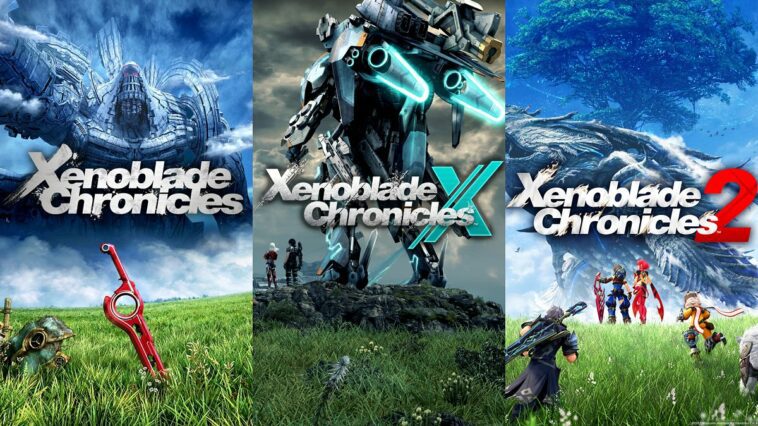
Yeah, those are pretty much my thoughts on the franchise. Yet, I am not so hard against the world of Xenoblade Chronicles 1, which I consider actually amazingly beautiful and I never thought on it as empty. At all. But the writer of the article didn’t play it first, he started playing xenoblade chronicles X so I understand his take on this.
And I am more critic against Xenoblade Chronicles 2. I mean, I think that the combat style while decent, is not good for this specific staging: Don’t you feel strange about those amazing blades with the appearence of warriors, standing there, quiet, with their hands raised towards you? Really? When I started playing I didn’t understand what was happening, why weren’t they fighting? They said they were fighters, and powerful ones. Ok. FIght. Come on. Why are they looking at me while I fight???
It doesn’t make sense. They fixed that in the expansion, showing what they were actually after. The gameplay in xenoblade chronicles is maybe good, but it doesn’t make sense because they had no time to finish it. And it absolutely shows.
The narrative have some flaws with characters that once joined to your team, lose all their relevance for the story. You could forget about them, I did.
And I absolutely agree about the oversexualizations. It breaks the immersion a lot. I was one of those guys who cried loud when we were victim of censorship in xenoblade chronicles X, but honestly, I would have prefered that the characters looked according to their personalities, so that it enriched them instead of evidencing that I am watching anime. And I say that when I freaking love anime. That’s the strange situation this game puts me.
So, yeah, for me it’s very easy to rank those games because the most important part of any jrpg is, in my humble opinion, the story. Then, the characters. Then, the gameplay. Then, the world. So, Xenoblade Chronicles 1, is the best for me. Then Xenoblade 2 and then Xenoblade X. I love all of them but that would be my personal ranking.
Great article, thanks.